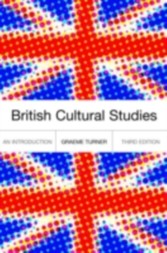
British Cultural Studies - An Introduction

von: Graeme Turner
Routledge, 2002
ISBN: 9780203994849
Sprache: Englisch
268 Seiten, Download: 2390 KB
Format: PDF
LANGUAGE AND CULTURE (p. 10-11)
In Chapter 2 I will sketch out the beginnings of British cultural studies within English literary studies, looking at the contributions of Raymond Williams and Richard Hoggart in some detail. At this stage only a couple of points need to be made about the way in which this tradition began.
Customarily, cultural studies is seen to begin with the publication of Richard Hoggart’s The Uses of Literacy (1958) and Raymond Williams’ Culture and Society 1780–1950 (1966; first published in 1958) and The Long Revolution (1975; first published in 1961). Both Hoggart and Williams can be placed within a tradition of English literary criticism generally identified with F. R. Leavis and noted for its concentration on the forms of literary texts and on their moral/social significance. What was impressive about both Hoggart and Williams was their ability to mobilize their methods of textual criticism so as to ‘read’ cultural forms other than literature: popular song, for instance, or popular fiction. But there were clear limits: both writers suffered from the lack of a method that could more appropriately analyse the ways in which such cultural forms and practices produced their social, not merely their aesthetic, meanings and pleasures. To reconnect the texts with society, with the culture and the individuals that produced and consumed them, involved a fundamental reorientation. One was required to think about how culture was structured as a whole before one could examine its processes or its constitutive parts.
As Iain Chambers (1986: 208) has suggested, ‘Explanations based on the idea of totality, on the rational frame that connects the most distant and complex parts, are characteristic of the great Continental schools of thought’: Marxism, classical sociology, psychoanalysis, structuralism, semiotics. The European influence on British cultural studies largely came, in the first instance at least, from structuralism. Structuralism has many variants, but its common characteristic is an interest in the systems, the sets of relationships, the formal structures that frame and enable the production of meaning. The original structuralist stimulus registered within British cultural studies was not, however, a theory of culture, but rather a theory of language. Within most of what follows, language looms as the most essential of concepts, either in its own right or through being appropriated as a model for understanding other cultural systems.
Saussure
Ferdinand de Saussure’s theory of language is our starting point.1 Common-sense understandings of the function of language would see it as a system for naming things; seemingly, an object turns up in the material world, we apply a name to it and communicate this to others, and the word enters into usage. Saussure sees it differently. For him, language is amechanism that determines howwe decidewhat constitutes ‘an object’ in the first place, let alone which objects might need naming. Language does not name an already organized and coherent reality; its role is far more powerful and complex. The function of language is to organize, to construct, indeed to provide us with our only access to, reality.
This distinction might become clearer if we refer to Saussure’s proposition that the connection between a word and its meaning is not inherent, or natural, but, in most instances, quite arbitrary; the word tree means what it does to us only because we agree to let it do so. The fact that there is no real reason this word should mean what it does is underlined by the fact that there are different words to express the same concept in different languages. Further, there is no ‘natural’ reason the concept itself should be expressed at all. There is no universal law that decrees we should distinguish between trees and, say, flowers, or between trees and grass; that we do so is a matter of convention.






